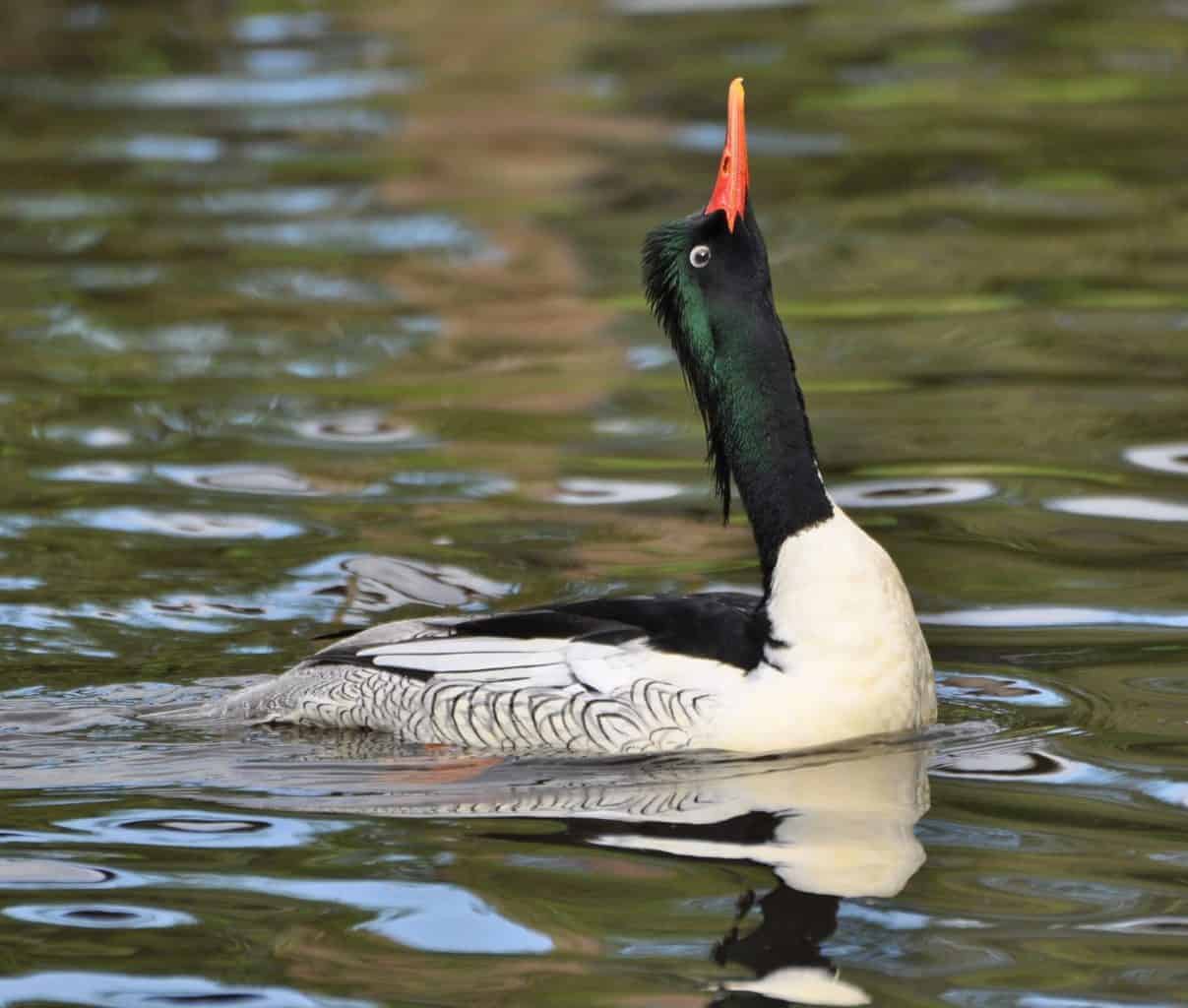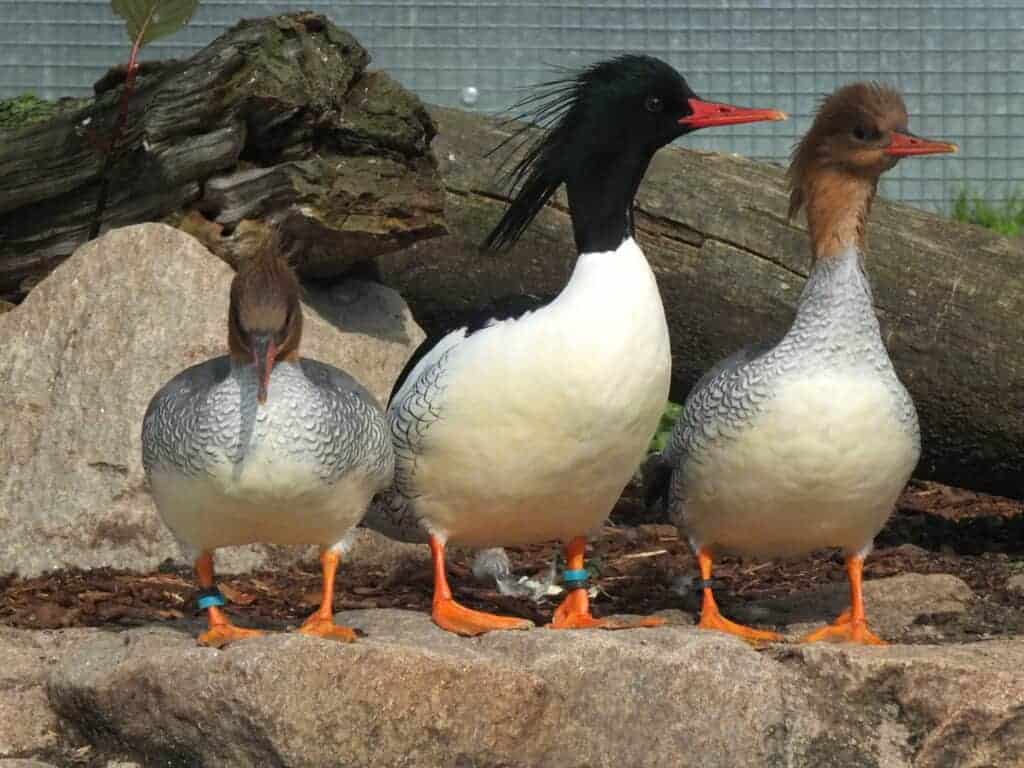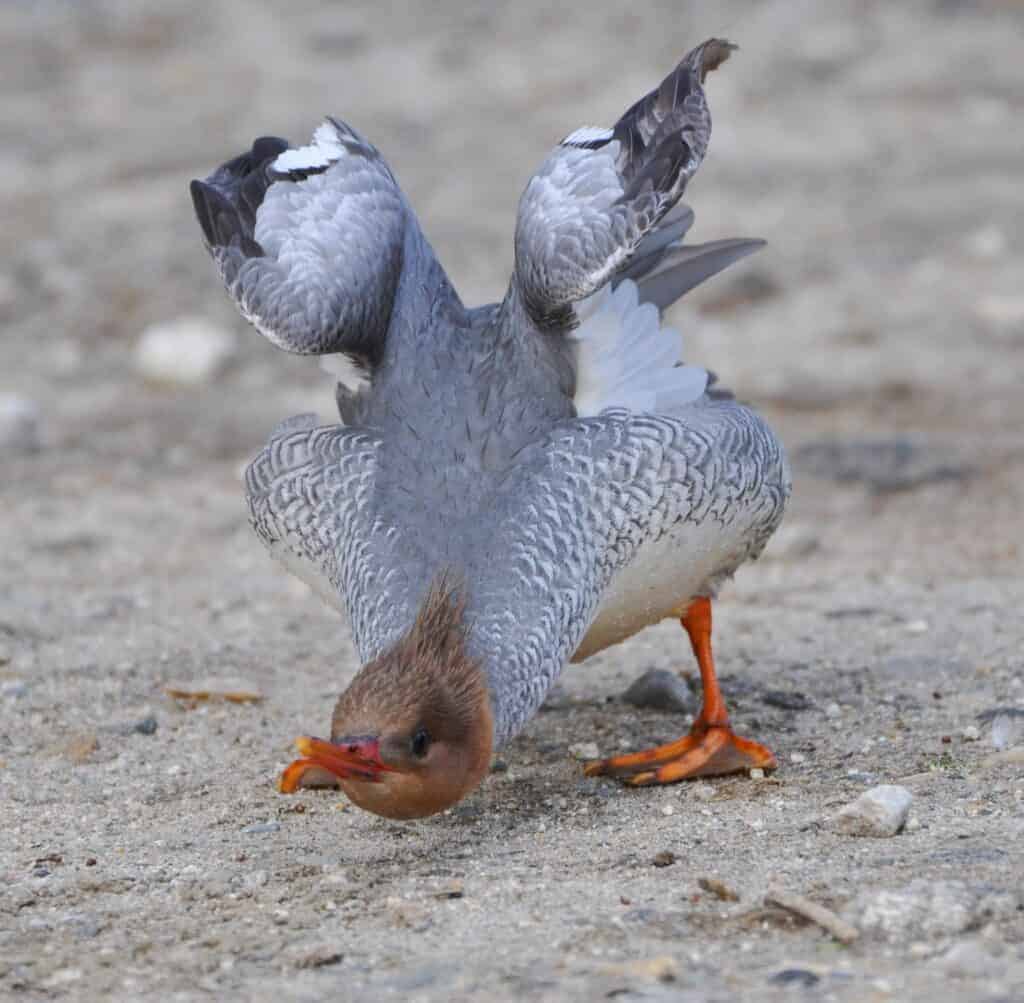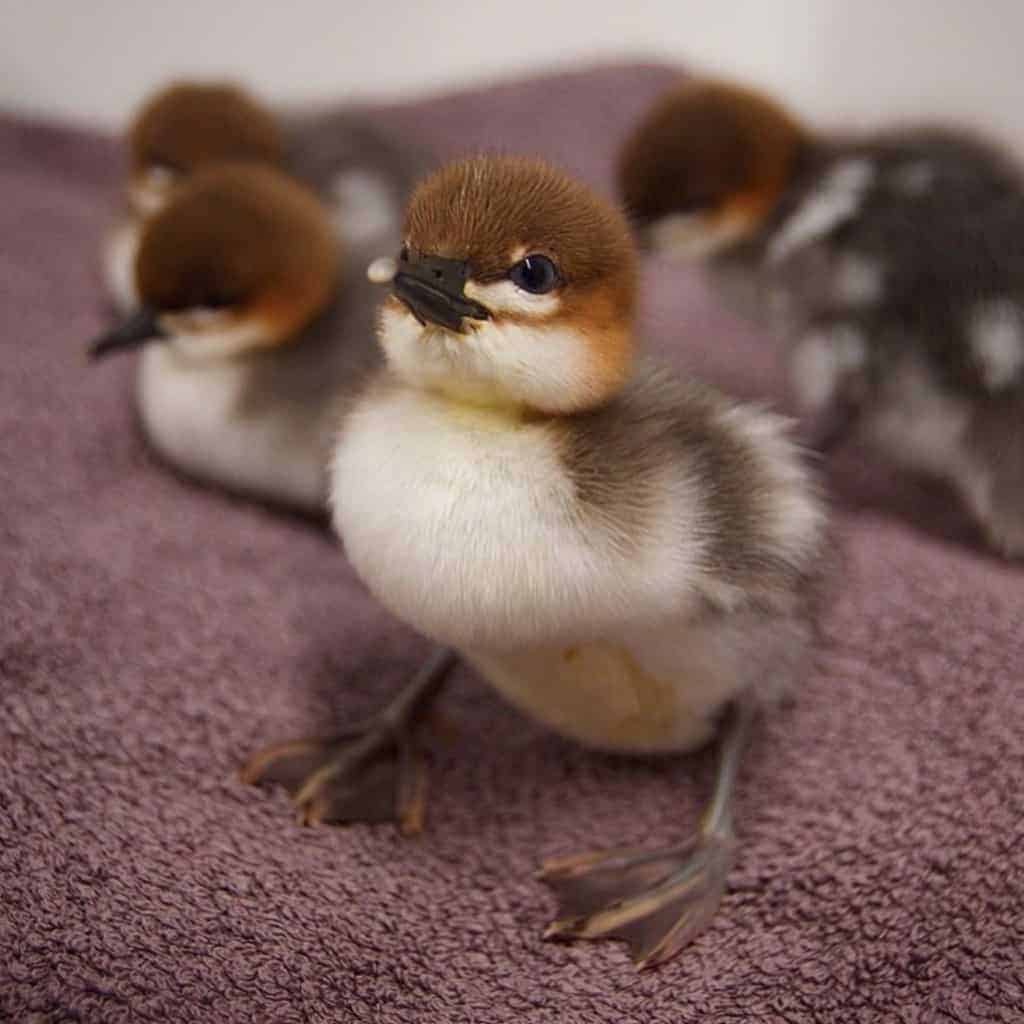Scaly-sided Merganser


Birdguides recently reported that a nest box programme has proven to be an efficient way of increasing the productivity of the Scaly-sided Merganser. A scheme for the species has been running in the Russian Far East since 2000. Read about it here.
Mergus squamatus
The Scaly-sided Merganser is also known as the Chinese Merganser. This is a large, handsome duck that resembles a cross between its closest relatives, the Red-breasted Merganser and Common Merganser, though the scaled flank feathers of both sexes are distinctive. It is a rare bird of forested lakes and rivers, its restricted range overlapping with those of both Red-breasted and Common Mergansers. Most birds breed in the Russian Far East, with small numbers in North Korea and North-east China. Little studied in the wild, it is a declining and globally Endangered species, threatened by the large-scale deforestation of the forested river valleys it favours for breeding.

Until recently it had never been kept in captivity outside China, but a few birds have been imported to collections in Western Europe and North America. In view of its threatened status in the wild, building up a viable captive population would be sensible. A number of good breeding groups are starting to be established on both continents.

Scaly-sided Mergansers need pristine clean water and good quality protein-rich food to encourage them to breed. Their courting ritual consists of mirrored head movements and harsh squawks. Ducklings can be started on live mealworms and a good quality micro-pellet, they should be slowly weaned off the mealworms after the first week. Mealworms can then be used as a treat to make them tame and calm.
In the wild they in tree hollows up to 60 feet above the ground. These birds regularly form nesting trios, consisting of one male and two females. Clutch sizes vary from 4 to 12 eggs, the family raising the brood communally. The young are able to fly at around eight weeks.